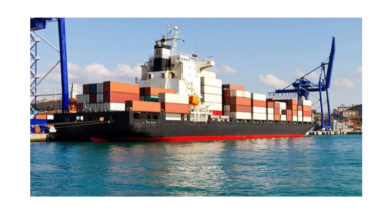What’s Up With Heidelberg?
Heidelberger Druckmaschinen recently released its financial report. According to company’s press release after nine months of financial year 2013/2014 (April 1 to December 31, 2013), Heidelberg remains on track with regard to earnings trend and profitability. After three quarters, the operating result is up significantly on the previous year. In the third quarter (October 1 to December 31, 2013), EBITDA remained at the previous year’s level despite the marked drop in sales. As a result, the company is on track to achieve its targets for the current financial year.
“After nine months, Heidelberg has made significant progress regarding profitability,” said Heidelberg CEO Gerold Linzbach. “As we expect our sales to pick up and the result to increase in the final quarter, we remain confident that we will meet our target of achieving a net profit.”
 During 2013 Heidelberg strengthened its ties with Fujifilm and the company also sold its profitable subsidiary CSAT to coding specialist Markem-Imaje.
During 2013 Heidelberg strengthened its ties with Fujifilm and the company also sold its profitable subsidiary CSAT to coding specialist Markem-Imaje.
CSAT is a specialist in integrating digital printing and labelling systems into industrial production lines, and focuses on supplying drug makers as well as the label conversion sector. The company’s flagship brand is its Linoprint L rotary inkjet printer, which has already become established as a platform for serialisation and track-and-trace projects in the pharma industry.
In order to dig deeper and to find out what German giant’s latest financial report means for the industry and also recent developments in Heidelberg globally and regionally we sat down with Mazen El Tibi Sales & Marketing Director for Heidelberg Middle East. “The numbers reflected in our financial report shows that Heidelberg strategy in order to adapt to the changes in the industry is bearing fruit. We are on the path to profitability and our financial results especially in the Middle East and GCC countries is pretty solid. On the digital side it’s worth noting that Heidelberg has always been interested in the technology. We were a pioneer in presenting digital technology to offset printers. We were always aware of the potential of digital technology. Having said that our approach to digital technology has always been a cautious one. You can’t just throw another digital press to the market and hope for the best. We carefully study the market and based on a carful analysis introduce a new press that we believe will contribute to the overall success of our customers. The CSAT deal and our cooperation with Fujifilm is also part of the Heidelberg global vision. In case of Fujifilm our cooperation revolves around technology development. There are many areas that we can combine our expertise and come up with exciting new technology. Although our cooperation also includes distribution of Fujifilm plates and consumables. “Comments El Tibi.
In February 2013 Fujifilm and Heidelberg Middle East announced their extended cooperation with the ‘Sunshine Project’. Based on the agreement Heidelberg Middle East was authorized to sell Fujifilm plates to UAE, Oman, Jordan, Bahrain, Iraq and Saudi Arabia. Considering the fact that Heidelberg was a major distributor of Kodak plates at that time one wonders if the shift hasn’t had its fair share of challenges. El Tibi explains: “Our relationship with Fujifilm in the region goes back to 27 years ago when we started to offer Fuji plates in Saudi Arabia market. So we already had a strong base for cooperation. But to be frank any change brings a new set of challenges. We did experience a period of uncertainty but the transition was smooth. We are very flexible and based on customer’s demand we can offer different products. With regards to Fujifilm there is a clear shift towards low chemical or processless plates. Printers in our region are now more environmentally conscious.”
A sense of optimism
Dubai world Expo 2020 announcement infused a sense of optimism in all industries across UAE. But the question is how optimistic should we really be? “Summer of 2013 was unusually idle as far as the business is concerned. Everybody was hesitant to invest. I think the reason was twofold. First the political turbulences all around us created a sense of insecurity on top of it printing companies here in UAE were waiting for World Expo 2020 announcement. But by the end of September the general mood was optimistic. We can feel this optimism in our day to day business. We were confident that market would pick up so we were already prepared. We are experiencing healthy demand not only for our sheetfed presses but also for our narrow web Gallus machines and flexo consumables. Our Mac Dermid flexo plates are highly in demand. When it comes to offset presses printers here in UAE prefer 5 colour + coater CD machines. Our CD machines are flexible. They can print on a wide range of papers from onion skin to 1 millimeter board. There is lesser demand however for our SX range except in Saudi where a number of SX machines have already been installed. Those who prefer perfecting operation usually opt for XL presses.” Comments El Tibi.
The offset argument
As the biggest offset printing press manufacture Heidelberg has always set the tone for commercial printing market. However with company’s recent foray into digital printing and the decreasing demand for offset presses the future of conventional printing technology doesn’t look promising. El Tibi begs to differ however. “Modern digital offset presses today can print short run cost effectively. At Heidelberg we have increased the productivity and efficiency our presses on continuing basis. Regarding offset vs digital argument you have to bear in mind that at certain point when you are dealing with quality vs cost issue you have no other option except offset. If the digital could break that barrier then it dents even more into offset market. But that hasn’t happened yet. There is no doubt that quality of digital has improved considerably and it can easily produce salable prints but it still has a long way to go to compete with offset. Personally I think in future a hybrid machine that combines best features of digital and offset technology is a likely scenario. But at the same time it has to make sense economically as well. At Heidelberg we already have the knowledge of manufacturing hybrid presses which is a blend of flexo and offset units so there is no reason why we can’t come up with another hybrid press which incorporates the best of the both worlds.” Concludes El Tibi.





